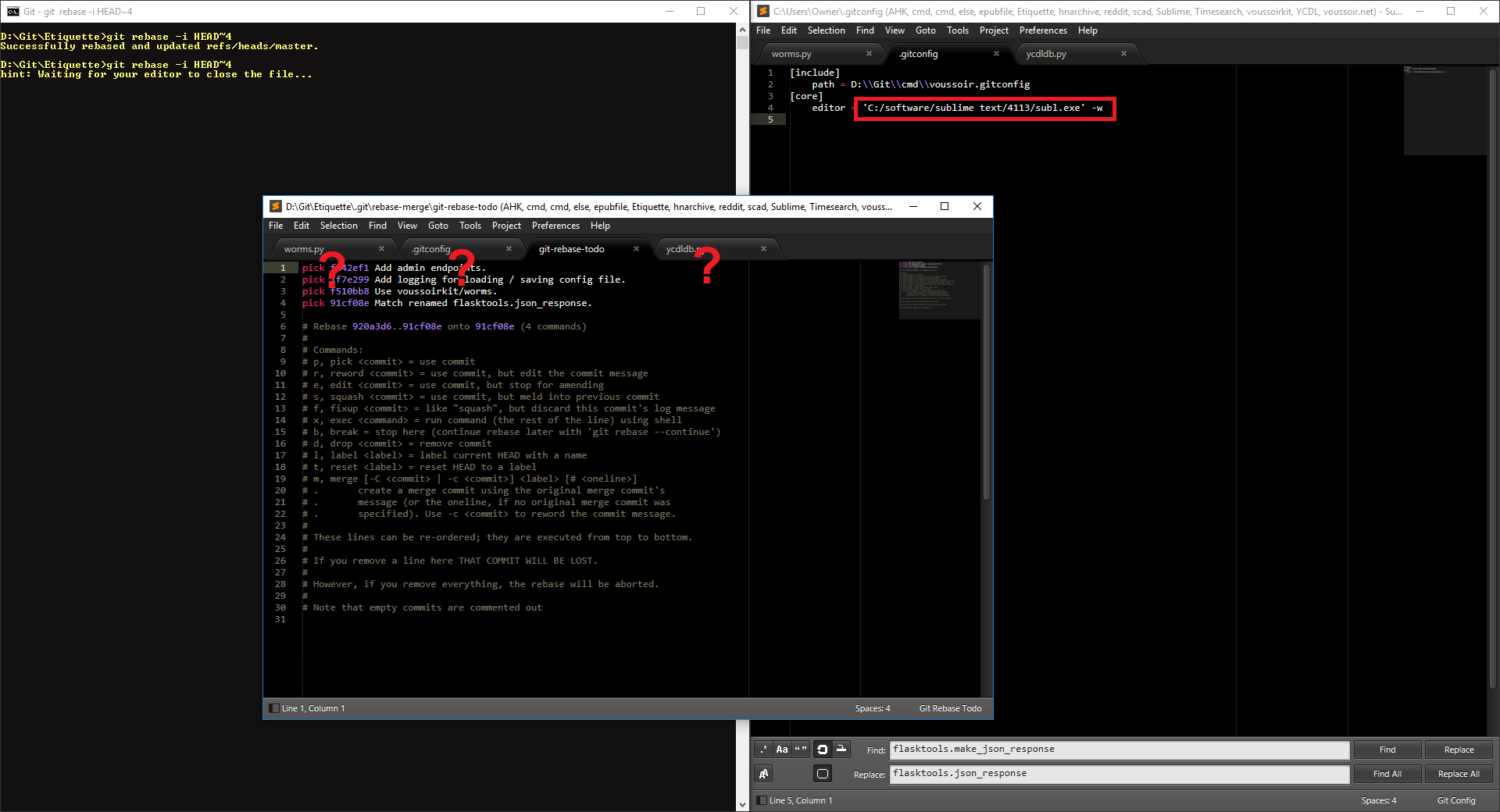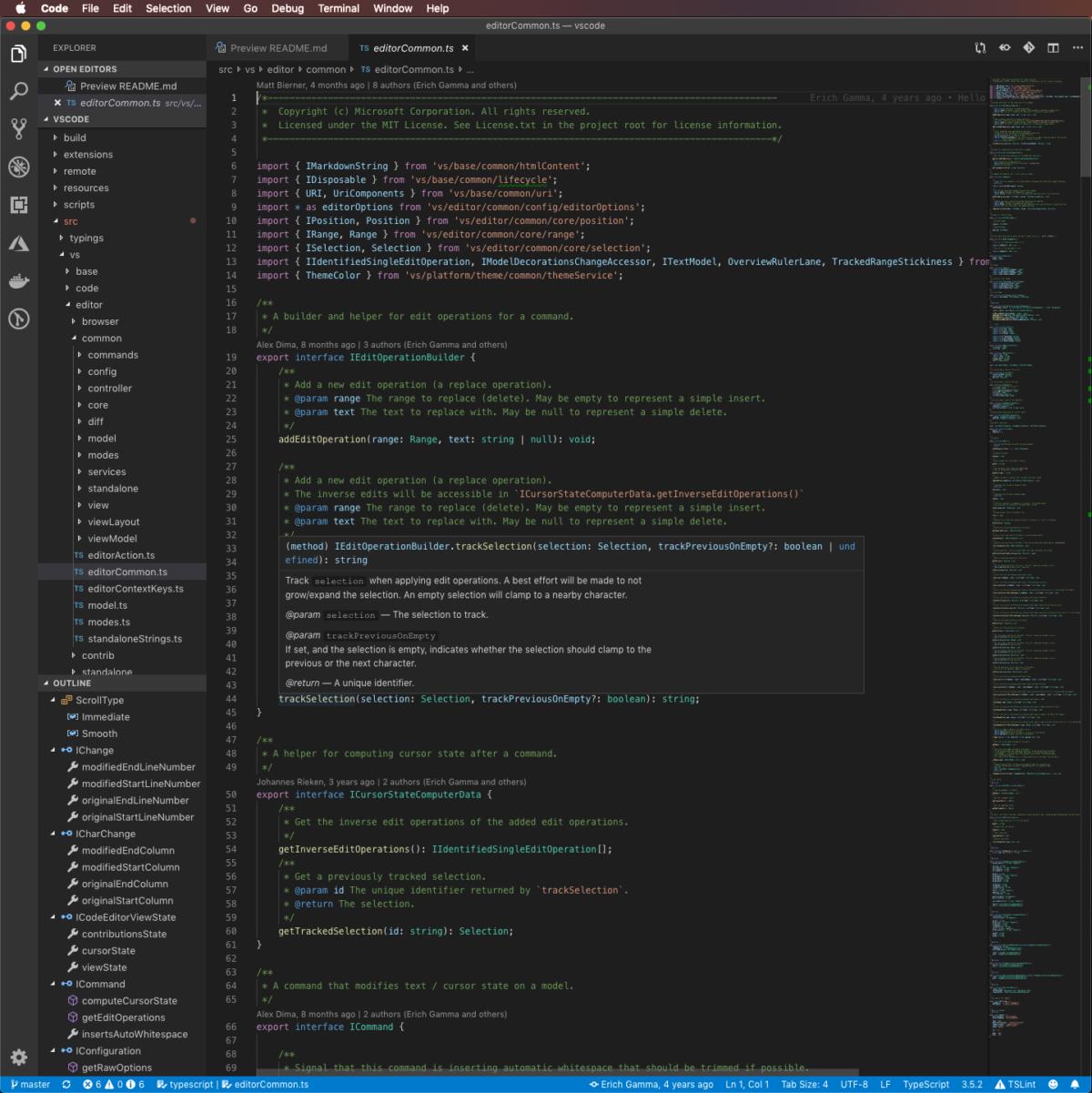

This can unintentionally cause problems since the receiving pipe may not be expecting color-coded input.
#Git core.editor sublime text windows code#
You can set the color.ui value to always which will also apply color code output when redirecting the output stream to files or pipes. The auto setting will omit color code output if the output stream is redirected to a file or piped to another process. Setting it to false will disable all Git's colored terminal output.īy default, color.ui is set to auto which will apply colors to the immediate terminal output stream.

This is the master variable for Git colors.

The git config command is used to set these color values. You can customize your Git output to use a personalized color theme.

Git supports colored terminal output which helps with rapidly reading Git output. git config -global merge.tool kdiff3 Colored outputs For an overview of various merge tools and configuration, see our guide on tips and tools to resolve conflits with Git. There are many external third party merge conflict resolutions that can be used instead. The internal Git diff is a minimal merge conflict viewer. In the event of a merge conflict, Git will launch a "merge tool." By default, Git uses an internal implementation of the common Unix diff program. ~ git config -global core.editor "mate -w"~ ~ git config -global core.editor "'c:/program files/sublime text 3/sublimetext.exe' -w"~ ~ git config -global core.editor "'c:/program files (x86)/sublime text 3/sublimetext.exe' -w"~ ~ git config -global core.editor "subl -n -w"~ ~ git config -global core.editor "nano -w"~ ~ git config -global core.editor "emacs"~ ~ git config -global core.editor "atom -wait"~ Listed below is a table of popular editors and matching git config commands: Editor One of the most common use cases for git config is configuring which editor Git should use. Many Git commands will launch a text editor to prompt for further input. It uses the -global flag so this value is set for the current operating system user. This means when looking for a configuration value, Git will start at the local level and bubble up to the system level.Įxpanding on what we already know about git config, let's look at an example in which we write a value: git config -global user.email example writes the value to the configuration name user.email. Thus the order of priority for configuration levels is: local, global, system.
#Git core.editor sublime text windows windows#
On windows this file can be found at C:\Documents and Settings\All Users\Application Data\Git\config on Windows XP, and in C:\ProgramData\Git\config on Windows Vista and newer. The system level configuration file lives in a gitconfig file off the system root path. This covers all users on an operating system and all repos. System-level configuration is applied across an entire machine. ~ /.gitconfig on unix systems and C:\Users\ \.gitconfig on windows Global configuration values are stored in a file that is located in a user's home directory. Global level configuration is user-specific, meaning it is applied to an operating system user. Local configuration values are stored in a file that can be found in the repo's. Local level configuration is applied to the context repository git config gets invoked in. The following configuration levels are available:īy default, git config will write to a local level if no configuration option is passed. The git config command can accept arguments to specify which configuration level to operate on. git config levels and filesīefore we further discuss git config usage, let's take a moment to cover configuration levels. This will return the configured email address, if any, that Git will associate with locally created commits. In this example, email is a child property of the user configuration block. For example: user.email git config user.email Configuration names are dot delimited strings composed of a 'section' and a 'key' based on their hierarchy. The most basic use case for git config is to invoke it with a configuration name, which will display the set value at that name. Becoming familiar with git config and the various Git configuration settings will help you create a powerful, customized Git workflow. We'll discuss Git aliases, which allow you to create shortcuts for frequently used Git operations. We'll be covering common configuration settings like email, username, and editor. Executing git config will modify a configuration text file. These configuration levels correspond to. The git config command is a convenience function that is used to set Git configuration values on a global or local project level. We briefly discussed git config usage on our Setting up a Repository page. In this document, we'll take an in-depth look at the git config command.


 0 kommentar(er)
0 kommentar(er)
